Why These New Ultra-Premium Headphones Are Some of the Best We’ve Ever Tested
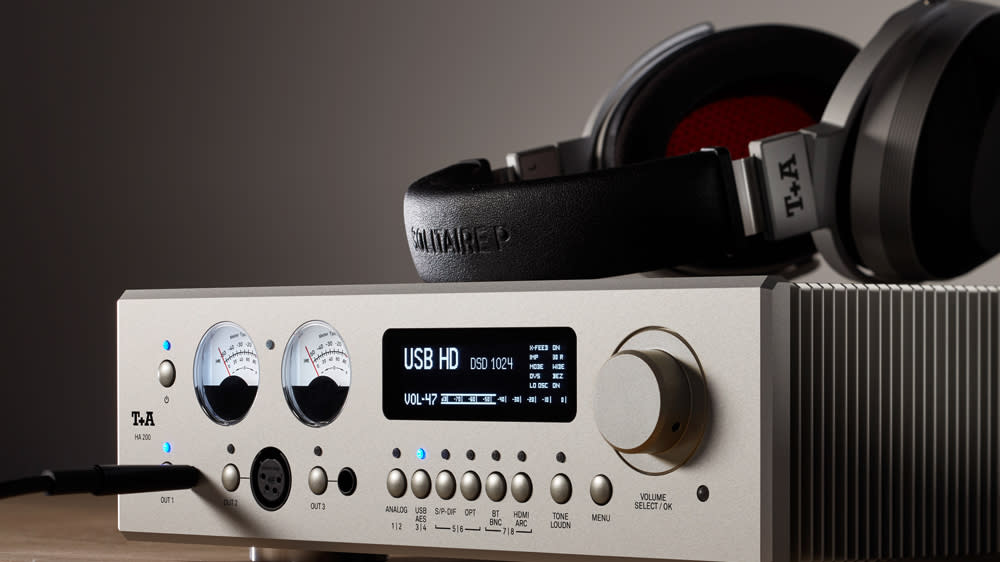
I bought my first serious headphones in 1974 (the Stax SR-3), back when only serious audiophiles and studio musicians used such things. Fast forward 50 years and headphones are the hottest segment in the consumer audio marketplace, with almost 550 million pairs sold worldwide in 2020 and, again, in 2021. While those numbers are remarkable, most headphones aren’t, but the few that are offer some of the most compelling listening imaginable. Once experienced, it’s hard to give up the intimacy and contemplative focus into the music afforded by the best of the best, like the T+A Solitaire P.
Over the course of my audio journey, I’ve encountered hundreds of brands and listened to thousands of products. But one name that has quietly slipped under my radar is T+A Elektroakustik, a company whose electronics, speakers and headphones are at the top of the audio pyramid. T+A (which stands for Theory+Application) was founded in 1978 by Siegfried Amft, who goes by “Ziggy” and remains at the helm today.
More from Robb Report
McLaren and Bowers & Wilkins Team Up for Special-Edition Wireless Headphones
The Innovative Synthesizer Used by Frank Zappa and Pink Floyd Has Been Resurrected
Luxman's New Integrated Amplifier Is an All-in-One Jewel Box of Sound
The factory is situated in Herford, a German city in North Rhine-Westphalia with a population of 70,000 inhabitants. About 85 of them work at T+A, of whom 14 are graduate-level engineers—a high ratio most unusual for a small audio company. That’s because T+A designs all of its own products, and almost all of the components required to build them are also manufactured in-house. With T+A, all the stereotypical assumptions about German craftsmanship and stubborn perfectionism apply: one look at any piece of T+A gear suggests that compromise is not a part of the equation.
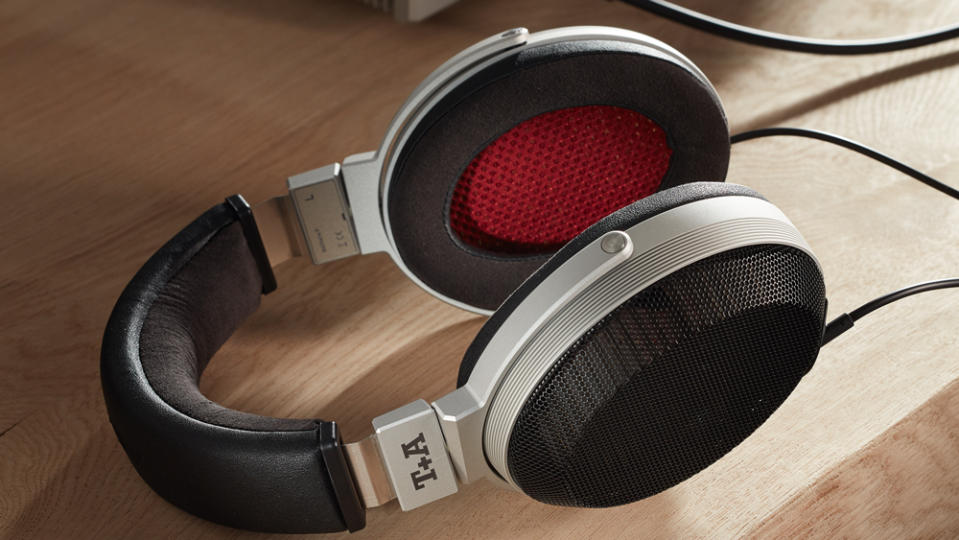
I cold-called T+A’s new North American headquarters out of curiosity about the company’s planar-magnetic headphones—the Solitaire P—which I’d heard about and assumed, at $6,900, represented a truly state-of-the-art effort. Export Sales Manager Jim Shannon, a 20-year veteran with T+A, acknowledged that the company has had a relatively low profile in the United States until now, recently expanding into the North American market with a concerted effort to spread the word. When he offered a listen to the brand’s top headphones, and the companion amp with which to drive them, it was impossible to demur. After all, I feast on headphones, and was prepared to enjoy every morsel of T+A’s unusual devices.
Why are they unusual? To start, the Solitaire P employs a planar-magnetic transducer, which uses a thin-film diaphragm driven by a strong magnetic field, a technology T+A considers inherently superior to dynamic transducers. T+A has 35 years of experience in the development and manufacture of film transducers, beginning with its first planar-electrostatic unit from 1983.
The magnetic equivalent, which is more robust, can be driven with a conventional amplifier and doesn’t require a dedicated power supply to energize the electrostatic stators. Some might call it the best of both worlds: an ultra-thin membrane with instantaneous transient response and large surface area that is easy to drive and reliable in the extreme. Add unbridled dynamic range, freedom from distortion, thunderous bass and linearity across the frequency spectrum from 5 Hz to 54 kHz, and the proposition posed by the Solitaire P is a compelling one.
My reference headphones are the electrostatic Stax SR-009S, until recently the flagship model from the small manufacturer whose products define everything that is good about artisanal Japanese audio culture. They are, without question, hard to beat with regard to detail resolution, low distortion and harmonic “rightness,” the parameters by which I judge a component. Remarkable about the Solitaire Ps is their electrostatic-like ability to lift veils and reveal previously unheard layers of a recording, all while maintaining an authoritarian grip on low frequencies without losing steam.
A go-to jazz recording for assaying the power of an acoustic bass is Brian Bromberg’s album Wood, where The Saga of Harrison Crabfeathers separates one-note, bass imposters from the real McCoy. With the T+A headphones, the full weight, texture and tone of Bromberg’s big upright is reproduced with an uncanny realism. A couple of other reference-quality recordings of acoustical, unamplified instruments also serve to highlight the merits of the Solitaire P. Largely unknown is Frederic Mompou’s Música Callada, one of the 20th century’s great musical treasures, lovingly played by Yuji Takahashi and one of the most revealing solo piano recordings ever. Going back to the Baroque, J.S. Bach’s ubiquitous Art of Fugue is elegantly unraveled by Reinhard Goebel’s Musica Antiqua Köln, whose string quartet and harpsichord are, like a Seurat painting, as vivid and colorful as they are delicately played. If one wants to see into the music, the Solitaire P may be the best tool this side of an electron microscope.
But lest I paint a picture of a surgical or scientific instrument, it’s important to note that these ’phones, with their over-ear, open-back design, look and feel as luxurious as they sound. They are supremely comfortable, and vegans will appreciate that both ear and head cushions are handmade in Germany from allergen-free synthetic leather and Alcantara, inviting hours-long listening sessions for those concerned about brushing up against ovine, caprine or bovine DNA.
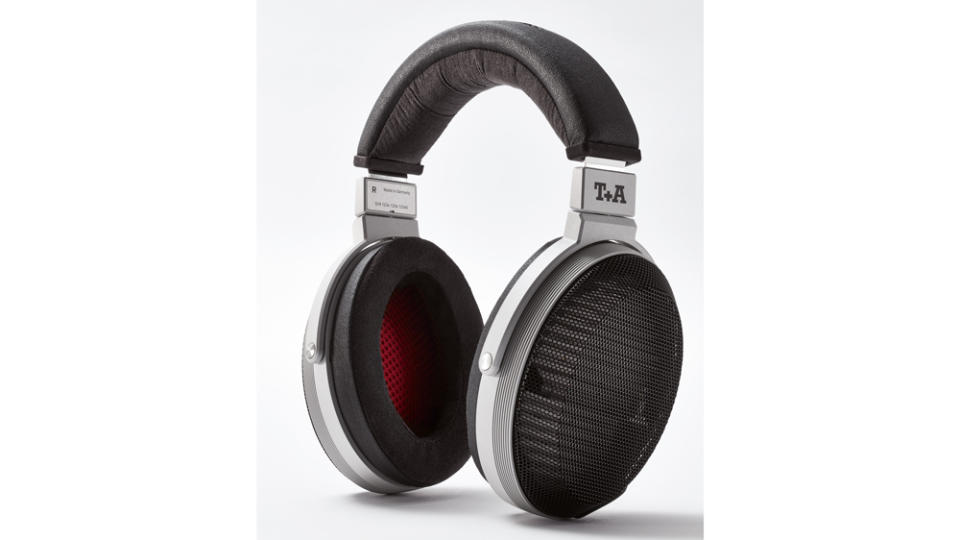
At $6,900, it’s clear the Solitaire Ps were designed without regard to cost, evident in the construction and parts manufactured to mil-spec tolerances, many machined from solid aluminum. T+A avoids the pitfalls of some planar-magnetic ’phones that are burdened by heavy weight and low efficiency. Similarly, they avoid resonance anomalies encountered in many closed-back systems, in part thanks to ear cups machined with a precision 5-axis milling machine from a solid aluminum plate that’s 35 mm thick. And each cup requires more than an hour of machine time. The yokes and yoke connections are also machined from solid aluminum, representing the finest quality metalwork I’ve yet encountered in a headphone.
The transducer is made in-house using high-performance neodymium magnets and precisely designed retaining rings and magnet mount. The diaphragm is an ultra-thin, featherweight film, coated with a conductor array whose impedance, at about 80 Ohms, makes the Solitaire P easy to drive. Two sets of low-capacitance connecting cables using ultra-pure copper (OFC) conductors are supplied, one set with a standard 6.3 mm barrel connector, and for the best sound quality, one with a balanced 4.4 mm Pentaconn connector.
Almost every integrated amplifier, preamp and streaming receiver features a ¼-inch jack on the front panel, and headphone amplification circuitry which is generally an afterthought and not remotely capable of extracting the capability of a device like the Solitaires. Most owners will choose a dedicated headphone amp for their headphones—ideally, T+A’s own $9,650 HA 200 headphone amplifier.
A sophisticated, pure analogue Class-A design, it incorporates MOS-FET transistors and a separate 100-watt analogue mains section. Refusal to compromise is evident, with no op-amps or chips anywhere in sight, while costly air-tight, encapsulated gold contact relays for volume, loudness and tone-control functions eliminate corrosion, dust or ageing effects. The HA 200 is designed to accommodate headphones (except electrostatics) with impedances ranging from 10 to 1,000 Ohms. Low-impedance designs draw high current, while high-impedance ’phones require stable, constant voltage, here ensured by the use of two 50-watt mains section transformers.
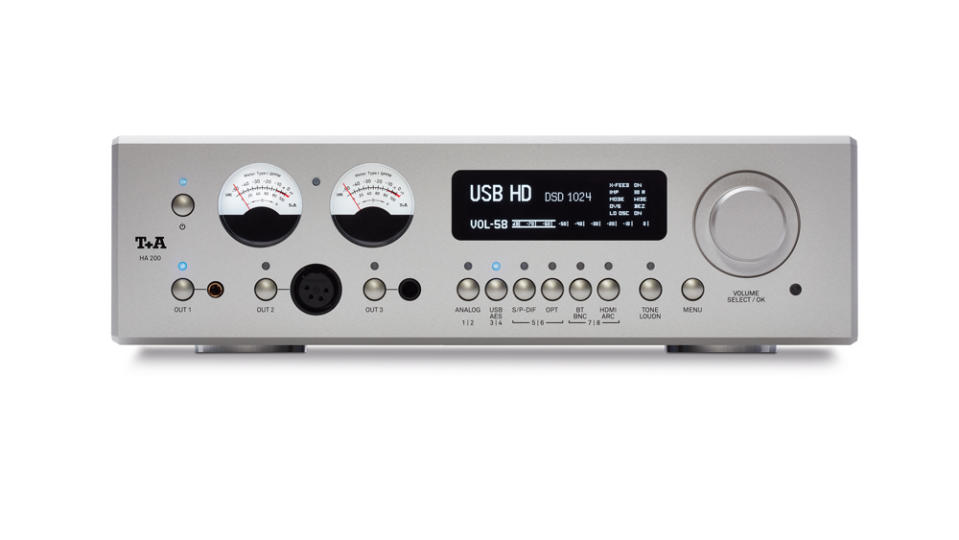
Such difficult-to-drive designs at either extreme are handily tamed by the HA 200. Its thick front panel features three headphone outputs—6.3 mm, 4.4 mm and four-pin XLR—and offers adjustable impedance matching for fine-tuning. As well as being a superb headphone amplifier, the HA 200 incorporates very sophisticated D/A conversion. The HA 200 is able to decode all digital formats, as T+A designers developed separate architecture for the company’s proprietary True 1-Bit digital/analogue converter, which provides DSD 1024 (Direct Stream Digital) for Bitstream, and their quadruple converter with 32 Bit/768 kHz for PCM (Pulse-Code Modulation). The digital section has its own power supply, galvanically separated from the analog section.

There are some neat features for signal processing too, where synchronous upsampling with four selectable oversampling algorithms can be selected by the listener to tailor the sound. Most listening was done on the Bezier 2 setting, which offers optimum “timing” and dynamics. The rear of the HA 200 has one pair each of analog RCA and XLR inputs, as well as digital inputs that include S/PDIF, optical, BNC and AES/EBU, which I used with an Audioquest Diamond interconnect playing files stored on a NAD Masters 50.2 Digital Music Player. USB inputs for computer and Bluetooth antenna round out the connections.
A little over a foot square and only four inches tall, the HA 200 weighs 15 pounds—a heft that belies its compact dimensions. And like the headphones, the HA 200 feels as if it has been milled from a solid ingot of non-magnetic aluminum. Front-panel controls are easy to operate and supported by a tidy menu control screen. Left- and right-channel VU meters can be set to display a variety of data, and even their color and brightness are adjustable. And an IR remote control is supplied for armchair conductors. Completists will note that the T+A Series 200 offers similarly sized stereo and mono amplifiers, a full-function D/A converter-preamplifier and the MP 200 Multi Source Player, which, at $5,900, combines full streaming capability, a CD drive and even FM radio.
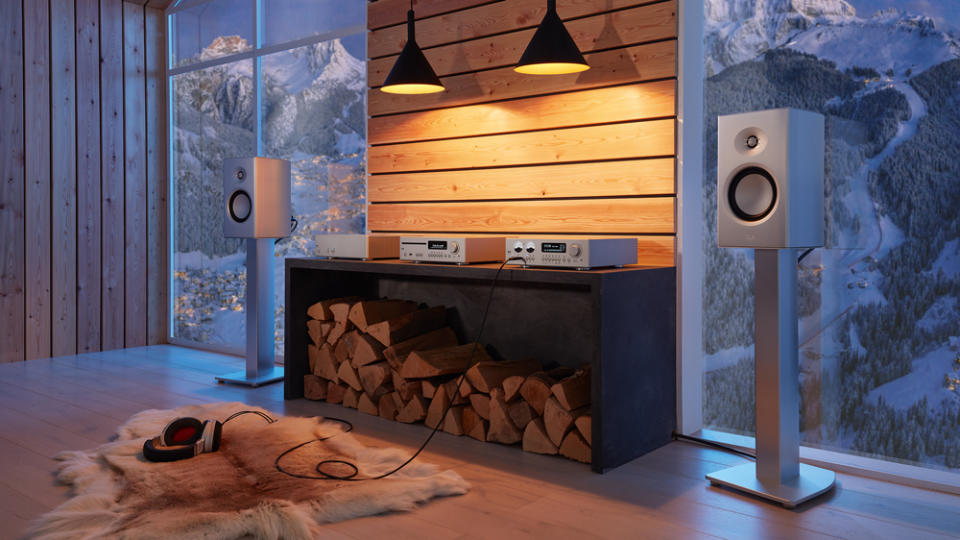
At nearly $17,000, a T+A system comprising the Solitaire Ps and HA 200 represents a sizable investment for those in pursuit of headphone pleasure. But listeners for whom a “big-boy” loudspeaker system is neither practical nor affordable might well rationalize the outlay, knowing that few systems at any price are likely to deliver a more intimate and emotionally rewarding glimpse into the music.
Sign up for Robb Report's Newsletter. For the latest news, follow us on Facebook, Twitter, and Instagram.

